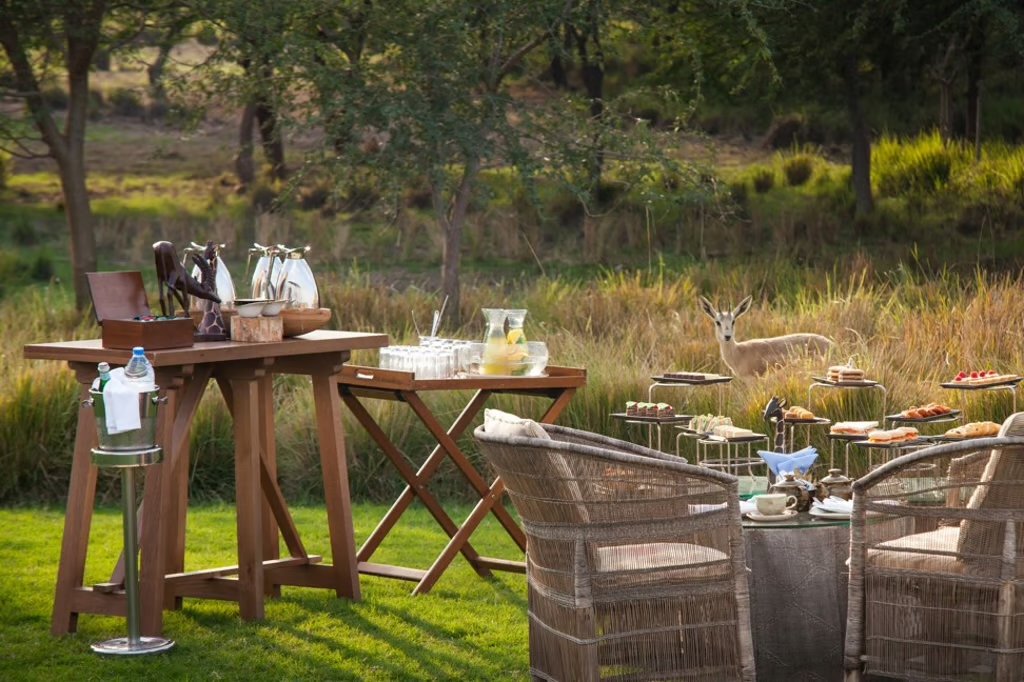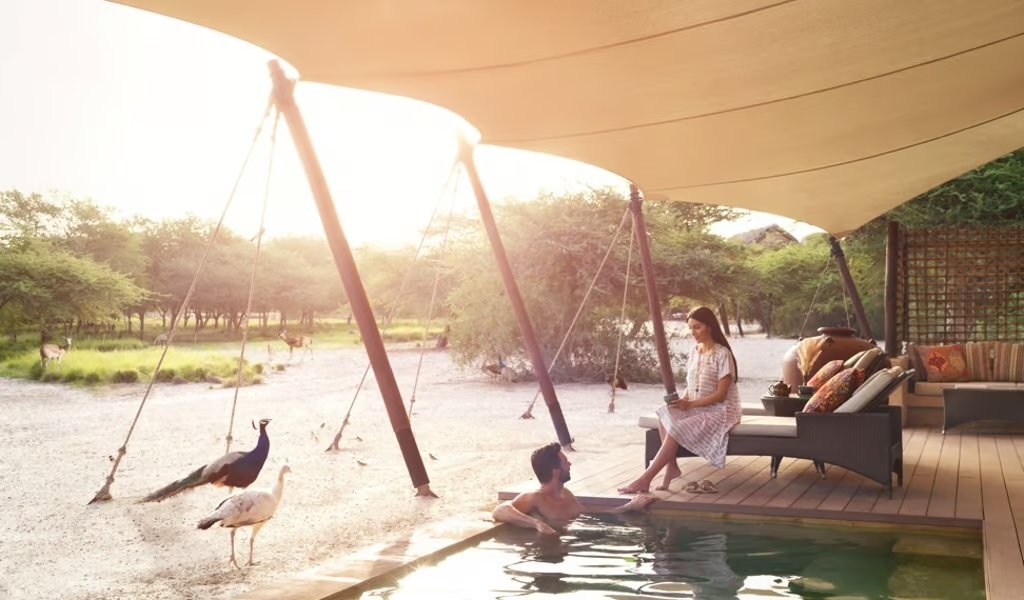Well-being and wildlife: Should luxury resorts be using animals in their human wellness programmes?
Resorts with wildlife or horses roaming around say interaction with animals enhances guests’ wellness, but what about the well-being of the animals?
When the International Luxury Travel Market fair took place in May this year, the main theme was health and wellness. From bespoke spa holidays to medical tourism, the search for holistic experiences away from home is trending. There is a growing demand for therapy programmes, especially interactive ones with animals. But using animals as a means to benefit human wellness stirs debate between animal welfare groups and those who believe these such interactions are good for both the animals and humans.
In 1971, the late founder and president of the United Arab Emirates, Sheikh Zayed bin Sultan al-Nahyan, ordered the round-up of some endangered species, like the Arabian oryx (a magnificent antelope with a pure white coat and horns up to 75cm long), to be moved to a wildlife reserve off the coast of Abu Dhabi.
Located 170km southwest of Abu Dhabi, Sir Bani Yas Island dates back to the Bronze Age. Although the island has a long history of human settlement with remains found dating as far back as AD600, it was necessary to transform the land for the vision Sheikh Zayed had in mind.
Several million plants and trees were planted as part of his programme for the “Greening of the Desert”. These days, the island is home to more than 30 animal species that roam free in the 4,100-hectare Arabian Wildlife Park, almost over half the size of the island. The park is dedicated to breeding and rehabilitating animals indigenous to the Arabian Peninsula.
A grand tour of the island takes about 90 minutes with Anantara Sir Bani Yas Island Al Sahel Villa Resort’s wildlife drive. The Anantara is the only hotel on the island. The wild side of the park is best viewed on horseback. At the end of the day when you lead your four-legged companion back to its stable, you are greeted with other animals grazing on the property, such as sand and mountain gazelles, cattle egrets and peacocks. And nothing is more integral to desert life – as has been practised in the UAE for centuries – than falconry, when Bedouin tribes used falcons to hunt meat to supplement their diet. On Sir Bani Yas, falconry is offered from October until the end of April.
In the decades that followed, the island has thrived and become one of the UAE’s many success stories, attracting a steady stream of visitors from around the world.
But the debate concerning animal welfare in human wellness programmes remains.
Animals on holiday premises are not necessarily promoted as therapy animals. They are residents on the property and guests often have to pay extra to interact with them. In places like spas and retreats – where human well-being is at the forefront – there is the need to ensure that the animals are not just a marketing or PR gimmick. They should be promoted as therapy animals and their well-being should be taken into account, says Karina O’Carroll, animal welfare education manager at Animals Asia Foundation (AAF).
“Animals at venues such as [spas and retreats] still need a carer – someone responsible for the day-to-day, providing them with all their needs and monitoring all interactions with them. Ensuring the animals’ welfare is of paramount importance,” she explains. AAF provides an animal-assisted therapy programme called “Dr Dog”, where registered therapy dogs visit hospitals, elderly homes, schools, orphanages and centres for the disabled in Hong Kong and three mainland Chinese cities. The programme is also designed to change people’s attitudes towards dogs while standing up against the dog and cat meat trade. Today, there are more than 1,000 official AAF animal therapy dogs.
“The recent trend in working with or using animals, such as goat and puppy yoga classes for example, has to ensure that the animals are not stressed by handling, interaction with guests or placed in unnatural or stressful environments. Activities must be supervised by the animal’s handler or carer,” O’Carroll says.
“Having a retreat animal that guests can interact with in a controlled and limited way could have positive benefits – but caution should be taken with such kinds of activities. They might end up overwhelming the animal(s).” She adds that codes of practice should be laid out when it comes to interaction with animals.
North of Tucson, Arizona, in the shade of the Santa Catalina Mountains, sits Miraval’s Purple Sage Ranch. The ranch is known for its equine programme – where guests seeking holistic experiences can interact with the ranch’s animal residents.
“All horses at the Purple Sage Ranch are either retired or rescued. At Miraval, we not only address the horses’ physical needs such as proper nutrition and veterinary care, but we also pay attention to their emotional and mental needs,” says Wyatt Webb, founder and leader of the Equine Experience at Miraval Arizona.
“We acknowledge that they are herd animals and need room to roam and time to interact with one another. Time spent interacting with guests and trained staff provides meaningful connections that enhance their quality of life.”
Horses on the ranch spend about 16 hours a day in an unconfined space with other horses. In addition to fresh water, food and shelter, their other needs are monitored as well – such as whether they are suitable to take part in a class.
“Certain horses only teach certain classes, depending on their strengths, likes and dislikes,” Webb says.
“Guests can choose what experience they want in that particular moment of their lives,” Webb adds. “No matter your demographic, race or age, a horse’s feedback to an individual is so pure. All they want is for you to feel safe and they’ll let you know immediately if they don’t.”
He says prominent CEOs and businesspeople have tried their equine programmes.
“They say the experiences have helped them be more mindful in how they carry out their professional responsibilities and deal with stress.”
AAF’s O’Carroll says, “The companionship of animals can help to alleviate growing issues in society, such as social isolation, loneliness, poor physical health, stress and depression.”
Beyond therapy, some luxury hospitality brands focus on the rehabilitation of an animal or plant species or an environment. Banyan Tree’s property in the Maldives has become the research ground for the preservation of marine life.
“It was a natural progression, from hosting visiting scientists who helped local associates and guests better understand the coral reefs and the marine life they support,” says Steve Newman, director of Banyan Tree Marine Labs, when asked why a conservation programme was set up at Banyan Tree Vabbinfaru.
Efforts were stepped up after coral bleaching events (such as in 1998) to try to restore the reefs and understand what was affecting them, Newman explains.
“Before long, trained marine biologists became island residents and associates, offering guests the chance to better understand what they are seeing in the water, as well as engaging with local communities and schools on nearby islands to teach them about marine life and [encourage] conservation of their environment,” he says.
The labs also had a turtle-hatching programme that was discontinued in 2017 to focus on the coral reefs and the marine life they support. It is the first of its kind to be funded and built on a private resort dedicated to coral biology and ecology, Banyan Tree says.
“We train our marine biologists and ecologists on-site,” says Newman. “Guests can book a guided snorkelling tour with our marine biologists and our specially trained marine environment officers – all locally employed from the Maldives and provided with special vocational training.”
Guests can learn about marine life and coral reefs, as well as join tours of the house reef in which research and restoration projects are initiated, including the labs’ electric reefs.
“Another unique activity is our Citizen Scientist initiative, which gives our guests the chance to join our marine lab biologists in the water to learn how to collect data [on coral reefs and different species of marine life],” Newman adds.
The stable climate of the Maldives makes it a year-round destination, but the best time to visit is during the dry monsoon season (October to April).
Original article published on South China Morning Post (Aug 23, 2019)





